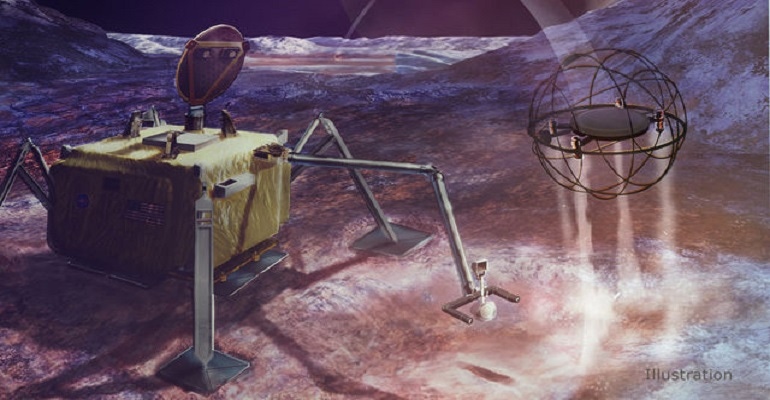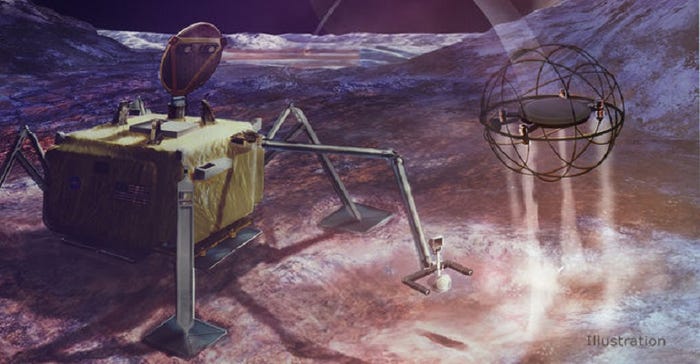Creating Autonomous Robots for Space
While space robots differ from Earth-bound robotics, there’s plenty of technology exchange from the sky to the ground.
September 8, 2020

Autonomous robotic systems are critical to space-based activities. Space robots will play an important role as humans move beyond space station work. In the meantime, robots are doing most of the exploring in space. Emerging autonomous robots are already assisting with everything from ship and habitat maintenance to remote R&D. The role of space robots will become even more pronounced in years to come.

With support from NASA and the Air Force, Panagiotis Tsiotras, IEEE fellow and professor, and David and Andrew Lewis Chair at the Guggenheim School of Aerospace Engineering, Georgia Institute of Technology, is involved in developing autonomous robot systems for space duties. Tsiotras focuses on developing new algorithms for fail-safe integration of machine learning components in aviation systems. The goal is to create high confidence and assurances of safety via:
Improved Perception – Enabling space-based robots to better perceive their environment to create situational awareness.
Optimized Control – Optimizing space-based robots to better identify plans/paths once an environment has been perceived.
Differences Between Earth and Space Robotics
In creating robots to operate in space, some of the basic robotics technology is useful, yet it has to be adjusted for the variety of environments in space. “There are many differences, as well as similarities,” Tsiotras told Design News. “The greatest difference, of course, is that space-based robots need to operate in a different environment – in space, there’s obviously no air, but there’s also radiation, extreme temperatures, and changing illumination conditions.”
These differences affect how the robot operates, but they also require that the robot be constructed of different materials altogether. “Space conditions impose severe restrictions when it comes to the type of materials that can be utilized, the computational capabilities the space robot can utilize, and the energy sources that can be tapped,” said Tsiotras. “Typically, space-certified sensors, actuators, and computers are often a generation or two behind their Earth-bound counterparts. This, in turn, imposes restrictions on the algorithms that a space-based robot can implement reliably.”
Energy Sources in Space Are Limited
While energy sources on Earth are plentiful, space presents a dramatically different energy environment. “Another issue is the limited source of energy and/or fuel in space,” said Tsiotras. “An orbiting robotic spacecraft, for instance, does not have the luxury of easily acquiring more fuel if its propellant runs out. The spacecraft needs to be operated carefully to avoid rapid fuel depletion.”
Another constraint on the space-based robot is the absence of gravity. While it might seem the absence of gravity would be an asset, the robot simply doesn’t operate the same without gravity, so adjustments need to be made in the mechanical design. “In the case of orbiting spacecraft, the absence of gravitational forces makes moving in space tricky,” said Tsiotras. “The closest Earth-based analog we have for space-based robots is robots operating in the deep ocean, where they have to face some of the same challenges.”
Space Developments Further Earth Robot Technology
Tsiotras noted that the R&D and advancements on space-based robots are convertible to the earth-bound robotics, particularly in demanding environments on Earth. “Developing space robotics absolutely transfers to Earth-bound robots,” said Tsiotras. “In addition to directly transferring space-based robotics technologies to deep-sea robots, solving resource-constraint problems that space-based robotics systems face will directly help robots on Earth due to the advanced algorithms that they’ll utilize, which will apply to Earth-focused problems.”
One of the critical principles in developing space-based robotics is reliability. The advances in reliability become another benefit that can be transferred to Earth robots. “Space-based robots should be super-reliable, as they operate very independently in space, which is a very challenging environment,” said Tsiotras. “Learning how to design, build, operate, and maintain highly reliable safety-critical systems will go a long way towards helping to design similar systems for Earth-based applications.”
Small Space Market Is Expanding
One of the challenges in developing technology for space equipment is the limited size of the market. A limited market tends to mean small expensive batches of equipment. Yet that may be changing. Tsiotras sees a growing space market. “The space-based robotic market is small compared to its Earth-bound counterpart,” said Tsiotras. “However, the market for space-based robotic systems is quickly expanding, mainly owing to the benefits provided by repurposing and upgrading aging telecommunications satellites.”
You won’t find many cobots in space, since space robots don’t often work alongside humans. That reality affects robot design. “Space-based robots offer quite different opportunities than Earth-bound ones,” said Tsiotras. “In many instances, Earth-based robotic systems are used to help a human do a particular job – say, for example, more safely drive a car, more efficiently work in an industrial assembly line. Often, such jobs can be done solely by a human operator, but, in the case of space-based robots, the situation is quite different.”
The space robot often engages in operations that simply can’t be done by a human. “In space, robots become true enablers. If they are not available, some jobs, such as planetary exploration, simply cannot be done,” said Tsiotras. “So, in many instances, space-based robotic systems are the only option we have to perform certain operations where humans cannot be present.”
Working with NASA, JPL, and the Air Force
In developing space-based robotics, Tsiotras works primarily with two clients. “In my lab, we have worked with both NASA, including JPL (Jet Propulsion Laboratory), and the Air Force in the area of space-basic robotic systems,” said Tsiotras. “Both of these agencies, for obvious reasons, have an interest in space-based robots. For NASA, we have been working to develop perception algorithms for autonomous robotic spacecraft that orbit – or land on – small asteroids.”
The needs for NASA’s JPL tend to be very specific, involving the environments on different space bodies, such as the Moon and Mars. “For JPL, we investigated articulated orbiting robotic spacecraft that can manipulate objects in a zero-g environment,” said Tsiotras. “The algorithms we develop need to be much more robust and work in a much harsher environment than Earth-bound robots. Our algorithms and techniques can therefore lead to more resilient robots even for Earth-bound applications.”
Rob Spiegel has covered automation and control for 19 years, 17 of them for Design News. Other topics he has covered include supply chain technology, alternative energy, and cybersecurity. For 10 years, he was the owner and publisher of the food magazine Chile Pepper.
About the Author(s)
You May Also Like





